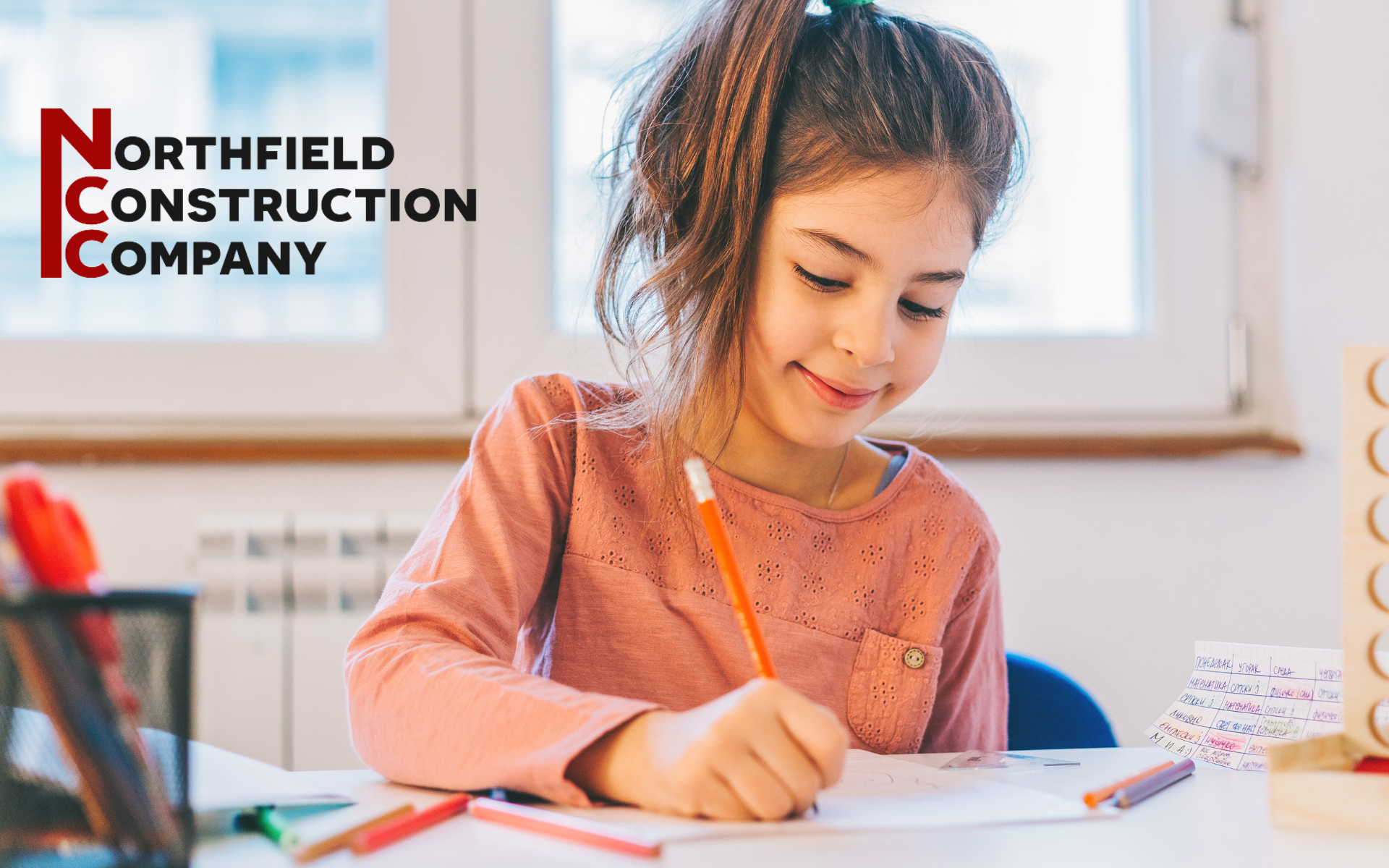As the kids arrive home from school, do they tell you about ALL the homework assigned by that one tough teacher? First, be thankful they still want to tell you about their day. 😊 Next, give your kids the location and tools to get through homework and studying with less stress and time.
Dedicated Space: This doesn’t mean you need to add an East Wing on the house specifically for studying (although we could do that for you); it simply means a space used consistently and efficiently. Barbara Coloroso, a best-selling author on parenting, is known for saying, “Our kids are counting on us to provide two things: consistency and structure.” The kitchen table might be ideal for younger children who need more help. Older kids might want a private, quiet space without the distractions of siblings, pets and parents. Wherever you choose, make sure there is enough space to spread out for writing and reference materials. And remember, the bed is where kids go when tired and ready for sleep. Trying to study while sitting in bed will prove extra challenging since the child’s brain has a mental association between the bed and feeling exhausted and restful.
Minimize Distractions: First, remove all unnecessary screens. Every child’s brain works differently, but most do their best work and can focus when The Simpsons or YouTube isn’t playing. Next, consider what else could be distracting, such as toys, people, loud music, and snacks. Oxfordlearning.com has a great article about minimizing distractions when studying. https://www.oxfordlearning.com/study-without-getting-distracted-tips/
Comfortable Chair: But not too comfortable! Make it ergonomically appropriate for their height. Your child’s feet should rest flat on the floor, and he shouldn’t need to hunch his shoulders when his elbows are on the table. Use a cushion or pillow on the chair or under his feet to make adjustments.
Natural or Task Lighting: Dim or low light can lead to eye strain, resulting in headaches and fatigue. Natural light is best for focus, but a task lamp will be perfect if your student does most work at night.
Clock or Timer: When a child feels overwhelmed by the amount of work that needs to be done, try and section it into smaller tasks and ask for a certain amount of focus time. Just 10- or 15-minute increments with breaks between tasks can feel much more manageable.
The Essentials: Minimize trips around the house searching for a highlighter, ruler, paper, colored pencils, notecards, calculator or books. Depending on the number of supplies your student needs, a rolling cart, utility caddy or desk organizer can keep everything in its place.
Inspirational or Functional Art: Consider surrounding your student with positive messages or images. Or depending on age, maps or the cursive alphabet might be helpful resources.
You want to give your kids the best opportunity to succeed and build confidence. If you’d like to add built-in shelves, finish a space in the basement or even create an amazing attic bonus room, give us a call! We’d love the opportunity to help your family make the most of every square foot!





